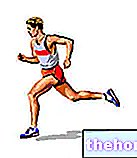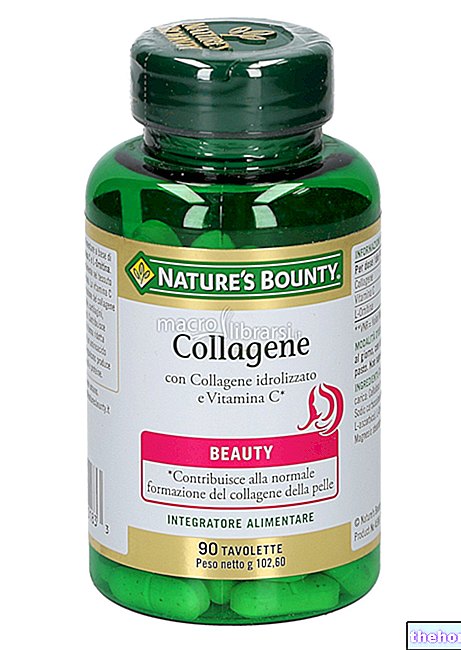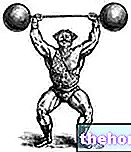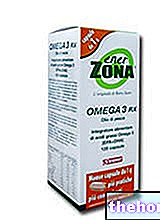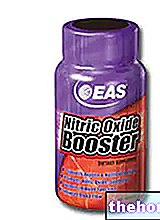
About Carnitine Proaction
Food supplement of L-carnitine.
FORMAT
Container of 90 capsules
COMPOSITION
L carnitine Tartrate: salified form with tartaric acid.
Ascorbic acid (Vitamin C)
D- alpha tocopheryl acetate (vitamin E, sucrose, starch and fish gelatin): stable salt of vitamin E
Pyridoxine (Vitamin B6)
Chromium picolinate
Anti-caking agent: Silicon dioxide
Excipient: magnesium oxide
Capsule: Food gelatin
Bulking agent: microcrystalline cellulose
One capsule contains
L-Carnitine 200 mg - trimethylated amino acid derivative, mainly synthesized in the liver and kidney from two essential amino acids, such as methionine and lysine, in the presence of vitamins B1, B6 and C.

Vitamin C 18 mg- also known as ascorbic acid L, it is contained in many foods of plant origin (citrus fruits, kiwis, peppers, tomatoes, green leafy vegetables). It is absorbed almost completely in the intestine, through a passive diffusion process and a sodium-dependent facilitated one; at too high doses (higher than 1gr) the absorption capacities drop dramatically up to 16%. In the organism, vitamin C is found in a labile form in the plasma and in a stable form in the tissues, up to 1 / 1.5 gr. The levels of tissue saturation naturally depend on the blood levels of this vitamin, which also reflect the antioxidant pull of the body. "organism, hence its dietary intake.
The biological activity of vitamin C is carried out as:
- powerful antioxidant, through the regeneration of vitamin E;
- enzymatic cofactor in hydroxylation processes, important for example for the synthesis of collagen, catecholamines and numerous other hormones;
- cofactor necessary for the synthesis of carnitine;
- reducing intestinal iron, with a consequent increase in absorption levels;
- reducing folic acid in its related coenzymatic forms.
Numerous studies show how this vitamin is useful in reducing the risk of onset of various chronic, neurodegenerative and neoplastic diseases; moreover, they attest to its ability, when combined with other antioxidants such as vitamin E, to reduce oxidative damage and strengthen the immune system. In sports practice, however, numerous studies show how vitamin C, also associated with other antioxidants, can reduce the oxidative damage induced by intense exercises, with a consequent reduction in the sensation of fatigue and improvement in post work out recovery times.
Its daily requirement is estimated at around 60mg, but at only 10mg it is able to prevent scurvy, a disease derived from vitamin C deficiency. A recent review, however, states that, in line with the scientific literature, it is necessary the supplementation of up to 1 g / day of vitamin C, to ensure an optimal return to health.
Side effects characterized by gastrointestinal disorders due to the acidity of this vitamin, are recorded for pharmacological dosages, ie higher than 10 gr / day.
Vitamin E 3mg: also known as alpha-tocopherol or RRR-tocopherol, it is introduced through the diet mainly through cold-pressed vegetable oils and oilseeds.Being a fat-soluble vitamin, it is absorbed in the intestine (20/40%) through the bile salts, whose secretion at the duodenal level is induced by dietary lipids. From the enterocyte, in the form of chylomicron, vitamin E first passes through the lymphatic system, then the blood and finally reaches the liver. From here, through the lipoproteins, it reaches the various tissues, where it is captured through the action of the enzyme Lipase . The excretion, among other things following a very slow turn-over, occurs both through the faeces in the form of α-tocopherylhydroquinone and α-tocohydroquinone, and through the urine (tocopheronic acid). The main biological role of this vitamin is the antioxidant: tocopherols reduce the oxidation levels of both polyunsaturated fatty acids (very important at the erythrocyte level), and some vitamins, such as A and C; at the same time they modulate the activity of cyclooxygenase and lipoxygenase, thus reducing the levels of prostanoids responsible for platelet aggregation and associated atherosclerotic disorders. As you can easily imagine, the scientific literature in this regard proposes THOUSANDS A of studies relating to the efficacy of vitamin E in the treatment of various pathologies, especially those mediated oxidative stress, cardiovascular, neurodegenerative and endocrine-metabolic. However, it is logical to ask: what is its role in healthy subjects? In athletes? What are the advantages? Even for these questions, the scientific literature provides answers, which however require the correct interpretation. Various studies, in fact, show how vitamin supplementation in general and that in particular with vitamin E, do not directly contribute to the variation of body composition or to the improvement of athletic performance; however, the very important antioxidant power, necessary to counteract the tissue damage induced by stress-inducing elements following intense physical activity, must be considered. More studies agree on this point, documenting how integration can significantly reduce the markers of oxidative damage in athletes. of various disciplines and of various levels, thus improving the recovery phase and aerobic capacity.
It is very difficult to define a recommended daily dose, as this definitely depends on the intake of polyunsaturated fatty acids in the diet and on the body's antioxidant capacity. Generally it is recommended to take at least 8 mg / day in women and up to 10 mg / day in men. Dosages around 300 mg / day and higher are described in the supplementary protocols for athletes.
Deficiency states are very rare in healthy subjects, while in pathological conditions they are generally associated with neurological deficits.
Acute toxic effects also appear to be of little relevance. After 2000mg / day, intestinal problems become evident.
Vitamin B6 1 mg: contained in many foods of animal and vegetable origin, it is mainly absorbed as pyridoxine in the intestine. Reached the liver, bound to albumin, it is first converted into pyridoxal and then phosphorylated. The most important role of this vitamin is carried out in the optimization of the processes of transamination, decarboxylation and racemization of amino acids, as well as in the process of glycogenolysis and synthesis of unsaturated fatty acids. It therefore plays a fundamental role in ensuring the correct use of dietary proteins. It is therefore easy to understand how the daily requirement varies greatly depending on the protein content of the diet (1.5 mg of vitamin B6 per 100 grams of protein); however it is recommended to take at least 1.4 mg / day. Sensory neuropathy has occurred for doses higher than 50 mg / day, which should therefore be considered as potentially harmful.
Chromium picolinate 10mcg: stable and less toxic form of chromium. Today it represents the safest form of chromium supplementation, even if the recorded bioavailability levels remain very low. This trace element is introduced through the diet (foods rich in chromium are spinach, mushrooms, chicken, nuts and asparagus), but only a very small part (0.5 - 1%) is absorbed. In the bloodstream it binds to a globulin, chromodulin, and to transferrin, which carry it to the liver. From here it can reach insulin sensitive tissues, improving sensitivity to this hormone. The molecular mechanism underlying this phenomenon is not yet fully understood, however it seems to be carried out partly through direct stimulation of the insulin receptor and partly through the modulation of a "resistin" protein, which would reduce glucose tolerance. Consequently, numerous studies show the ability of chromium picolinate to reduce hyperglycemia and hyperinsulinemia in patients with type II diabetes, with consequent reduction of all associated cardiovascular problems. For this reason, integration with chromium picolinate is recommended as an adjunct to the pharmacological therapy of this disease. Given the benefits obtained on the regulation of insulin function, with a widespread metabolic improvement, the application has also been tested in the sports field, with the hope to obtain benefits especially on the modification of body composition. However, the results of these studies were very disappointing; in fact, numerous studies conducted on the elderly, athletes, trained women and moderately obese women, have agreed that this trace element is incapable of making significant improvements in body composition and muscle strength, even in the case of controlled training. It should also be noted that EFSA (European activity for food safety), while registering chromium picolinate as the best source for food supplementation, has reserved the possibility of carrying out further studies on the genotoxicity of this element.
Its daily requirement is estimated at around 50mcg, but supplementation requires significantly higher doses, which generally do not fall below 200mcg.
Product features Carnitine Proaction
This carnitine supplement comes in capsule form, with the maximum dosage required by law. In addition to L-carnitine tartrate, the supplement provides vitamin C, E, B6 and chromium picolinate, albeit at relatively low dosages compared to the potential needs of an athlete or in any case of a sportsman.
The product focuses mainly on carnitine, presenting itself as a supplement for athletes necessary to optimize lipid metabolism and muscle aerobic capacities, thus also justifying the presence of chromium and thiamine; however, it could also be interesting, because it is scientifically proven, the potential synergistic antioxidant effect that Vit E, Vit C and L carnitine could take during physical activity and in subsequent recovery (even if at higher doses than those recommended).
Method of use recommended by the company - Carnitine Proaction
Take one cps a day
Directions for use in sports Carnitine Proaction
In sports, the intake of L Carnitine pul follow different protocols. The most common provide for a gradual weekly rise from 500mg up to 2 / 2.5g per day, while others provide for a drop from 2.5g to 500mg per day. Higher dosages in healthy subjects they are not recommended as the product would be excreted intact by the kidney.
The optimization of supplementation with L-Carnitine should include aerobic exercises, able to keep the pO2 high in the muscles, and possibly a reduction in the carbohydrate content of the diet.
Rationale for use - Carnitine Proaction
The scientific literature provides several very conflicting articles, in most cases negative, regarding the terms of aerobic performance improvement, or an increase in lipid metabolism following carnitine supplementation in healthy individuals and athletes. However, an important point different from the common use of this supplement comes from two studies: the first which demonstrates the increased expression of androgen receptors following resistance exercises and integration with L carnitine tartrate, and the second which underlines the role of carnitine as an antioxidant, given its ability to reduce markers of oxidative stress, such as hydrogen peroxide, following both aerobic and anaerobic exercises. This latest study could support the hypothesis of a useful synergy with other antioxidants in favoring muscle recovery after work out, and reduce the tissue damage to which the muscle undergoes following intense physical exercise.
Carnitine Proaction Side Effects
At high doses, episodes of insomnia, nausea, abdominal cramps, migraines and gastrointestinal disorders, although rare, may occur.
Precautions for using Carnitine Proaction
Contraindicated in cases of renal, hepatic, diabetic, pregnancy, lactation, mood disorders.
This article, elaborated on the critical rereading of scientific articles, university texts and common practice, is for information purposes only and therefore has no medical prescription value. It is therefore always required to consult your doctor, nutritionist or pharmacist before undertaking the use of any supplement.. Learn more about the critical analysis of Carnitine Proaction.
J Physiol. 2007 June 1; 581 (Pt 2): 431-44
New insights concerning the role of carnitine in the regulation of fuel metabolism in skeletal muscleFrancis B Stephens, Dumitru Constantin-Teodosiu, and Paul L Greenhaff
Ann N Y Acad Sci. 2004 Nov; 1033: 30-41.
Kinetics, pharmacokinetics, and regulation of L-carnitine and acetyl-L-carnitine metabolism Rebouche CJ.
J Appl Physiol. 1988 Jun; 64: 2394-9.
Influence of carnitine supplementation on muscle substrate and carnitine metabolism during exercise. Soop M, Björkman O, Cederblad G, Hagenfeldt L, Wahren J.L-Carnitine in the treatment of fatigue in adult celiac disease patients: a pilot study.Ciacci C, Peluso G, Iannoni E, Siniscalchi M, Iovino P, Rispo A, Tortora R, Bucci C, Zingone F, Margarucci S, Calvani M.
Oxidative stress in response to aerobic and anaerobic power testing: influence of exercise training and carnitine supplementation.
Bloomer RJ, Smith WA.
Res Sports Med. 2009 Jan-Mar; 17: 1-16.
Wraemer WJ, Spiering BA, Volek JS, Ratamess NA, Sharman MJ, Rubin MR, French DN, Silvestre R, Hatfield DL, Van Heest JL, Vingren JL, Judelson DA, Deschenes MR, Maresh CM.
J Strength Cond Res. 2008 Jul; 22: 1130-5.
ffects of L-carnitine L-tartrate supplementation on muscle oxygenation responses to resistance exercise.
Spiering BA, Kraemer WJ, Hatfield DL, Vingren JL, Fragala MS, Ho JY, Thomas GA, Häkkinen K, Volek JS.
Chromium picolinate and conjugated linoleic acid do not synergistically influence diet- and exercise-induced changes in body composition and health indexes in overweight women.
Diaz ML, Watkins BA, Li Y, Anderson RA, Campbell WW.
J Nutr Biochem. 2008 Jan; 19: 61-8. Epub 2007 May 24.
Clinical studies on chromium picolinate supplementation in diabetes mellitus - a review.
Broadhurst CL, Domenico P.
Diabetes Technol Ther. 2006 Dec; 8: 677-87. Review.
The potential value and toxicity of chromium picolinate as a nutritional supplement, weight loss agent and muscle development agent.
Vincent JB.
Sports Med. 2003; 33: 213-30. Review.
Int J Sport Nutr Exerc Metab. 2002 Jun; 12: 125-35.
Effects of resistive training and chromium picolinate on body composition and skeletal muscle size in older women.Campbell WW, Joseph LJ, Anderson RA, Davey SL, Hinton J, Evans WJ.
Evaluation of the potential genotoxicity of chromium picolinate in mammalian cells in vivo and in vitro.
Andersson MA, Petersson Grawé KV, Karlsson OM, Abramsson-Zetterberg LA, Hellman BE.
Food Chem Toxicol. 2007 Jul; 45: 1097-106. Epub 2006 Nov 22.
A pilot study of chromium picolinate for weight loss.
Yazaki Y, Faridi Z, Ma Y, Ali A, Northrup V, Njike VY, Liberti L, Katz DL.
J Altern Complement Med. 2010 Mar; 16: 291-9.
Aging Clin Exp Res. 2009 Apr; 21: 111-21.
Vitamin E and aerobic exercise: effects on physical performance in older adults.Nalbant O, Toktaş N, Toraman NF, Ogüş C, Aydin H, Kaçar C, Ozkaya YG.
Vitamin C and E supplementation prevents mitochondrial damage of ileum myocytes caused by intense and exhaustive exercise training.
Squad EF, Ribeiro RF, Pereira FM, Freymüller E, Aboulafia J, Nouailhetas VL.
J Appl Physiol. 2009 Nov; 107: 1532-8. Epub 2009 Aug 20.
Food Chem Toxicol. 2004 Jun; 42: 1029-42.
Determining the safety of chromium tripicolinate for addition to foods as a nutrient supplement.Berner TO, Murphy MM, Slesinski R.
Vitamin C: is supplementation necessary for optimal health?
Deruelle F, Baron B.
J Altern Complement Med. 2008 Dec; 14: 1291-8. Review.
Antioxidant Supplementation Does Not Alter Endurance Training Adaptation.
Yfanti C, Akerström T, Nielsen S, Nielsen AR, Mounier R, Mortensen OH, Lykkesfeldt J, Rose AJ, Fischer CP, Pedersen BK.
Med Sci Sports Exerc. 2009 Dec 14. [Epub ahead of print]


